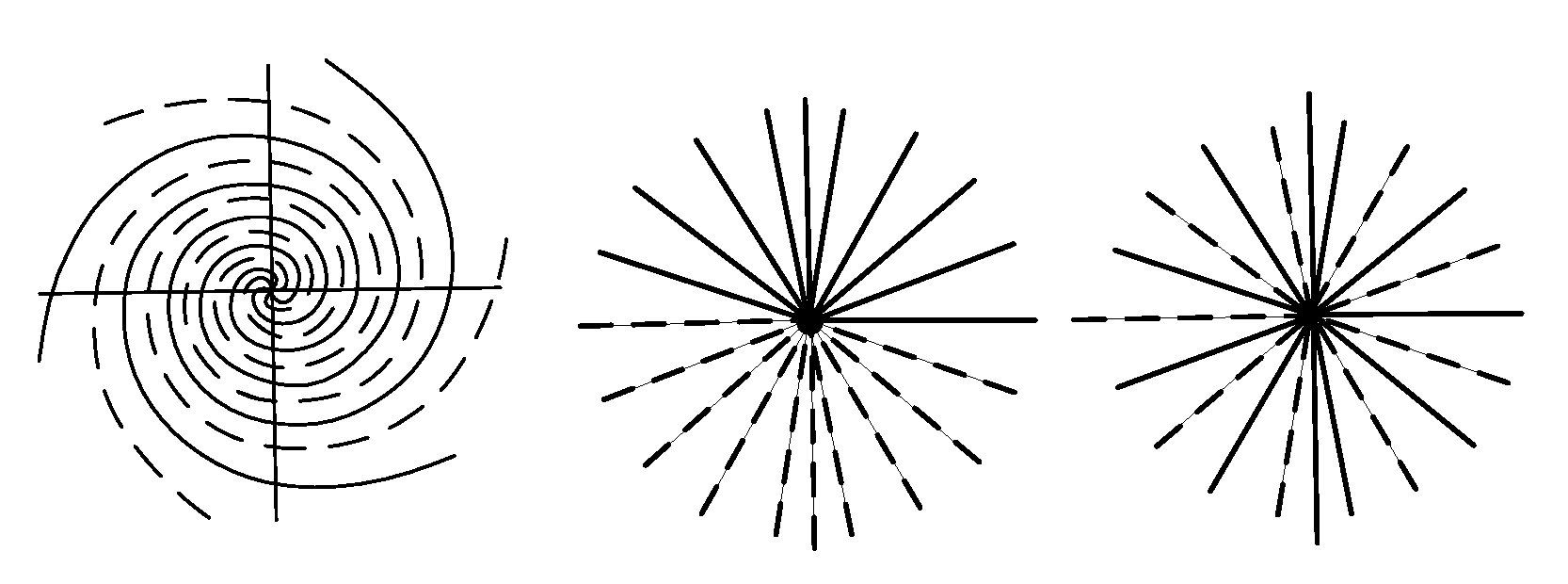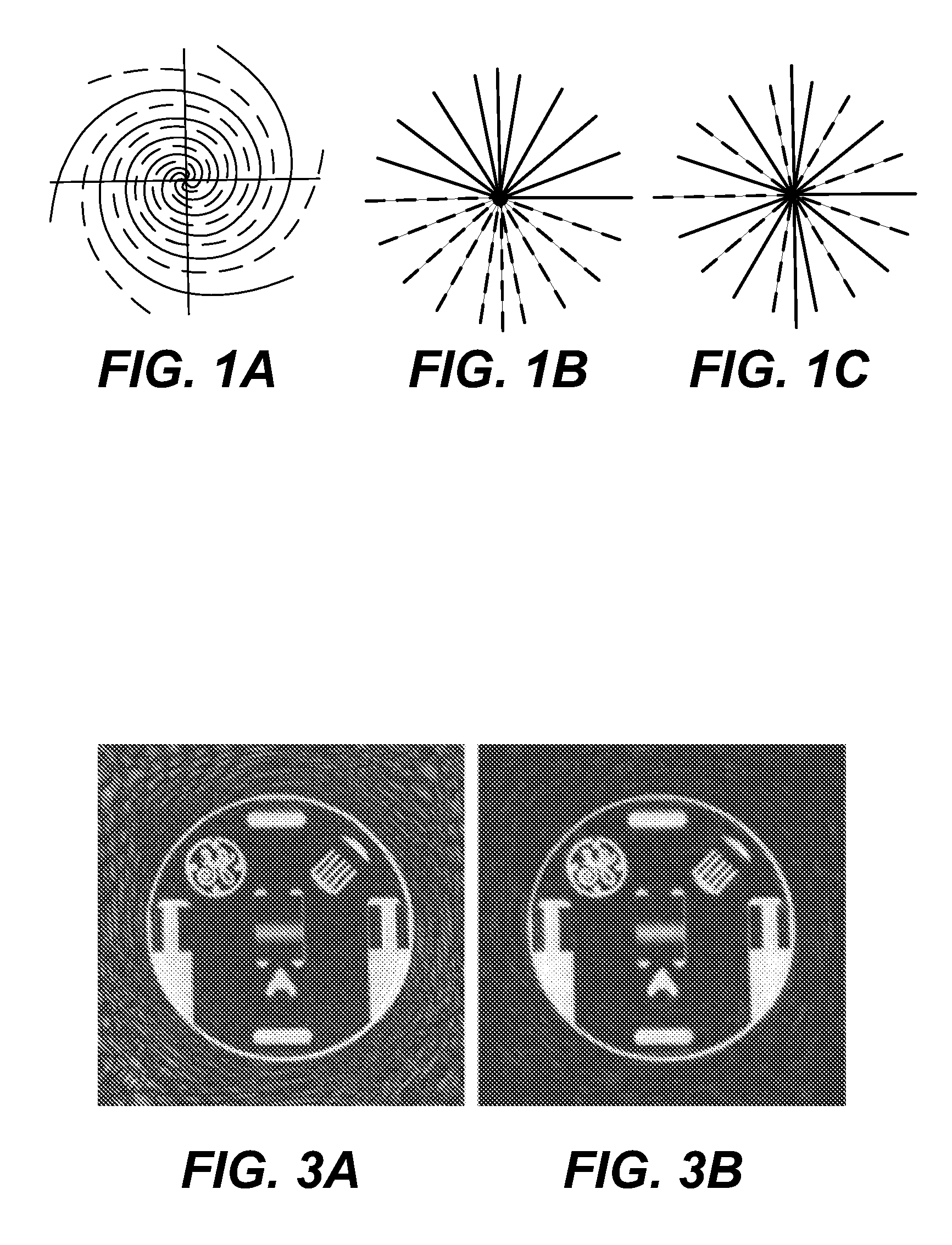Partial k-space reconstruction for radial k-space trajectories in magnetic resonance imaging
a magnetic resonance imaging and partial k-space technology, applied in the field of magnetic resonance imaging, can solve the problems of incomplete k-space reconstruction, large error in image processing, and inability to perform partial k-space reconstruction for many k-space trajectories, and achieves minimal aliasing artifacts and fairly accurate density compensation and de-apodization.
- Summary
- Abstract
- Description
- Claims
- Application Information
AI Technical Summary
Benefits of technology
Problems solved by technology
Method used
Image
Examples
Embodiment Construction
[0014]FIGS. 1A-1C illustrate k-space trajectories for which the present invention can be employed in partial k-space data reconstruction. In FIG. 1A, a variable-density spiral trajectory is shown in which the solid line spiral are sampled and the dashed line interleaved spirals are obtained by a reconstruction from the acquired spiral data. In FIG. 1B, projection reconstruction trajectories use a semicircle region acquisition (solid lines) with conjugate symmetry employed to reconstruct trajectories in the bottom semicircle region. FIG. 1C projection reconstruction trajectories with every other spoke acquired and with the interleaved spokes being reconstructed from the acquired trajectory data. This acquisition can be done in three different ways. This form of data can be obtained by acquiring every other half spoke with or without the extension beyond the k-space origin. The other way is to acquire every other bent full spokes.
[0015]In each of these trajectories, all trajectory lin...
PUM
 Login to View More
Login to View More Abstract
Description
Claims
Application Information
 Login to View More
Login to View More - R&D
- Intellectual Property
- Life Sciences
- Materials
- Tech Scout
- Unparalleled Data Quality
- Higher Quality Content
- 60% Fewer Hallucinations
Browse by: Latest US Patents, China's latest patents, Technical Efficacy Thesaurus, Application Domain, Technology Topic, Popular Technical Reports.
© 2025 PatSnap. All rights reserved.Legal|Privacy policy|Modern Slavery Act Transparency Statement|Sitemap|About US| Contact US: help@patsnap.com



